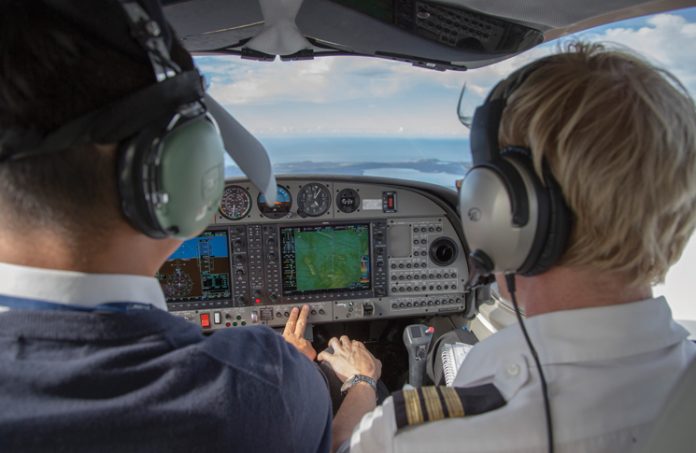Flight reviews come around fast and can be a nerve-racking experience – particularly if you’re not maintaining your currency as a pilot.
However, there is good news: Dave Prossor, a flight instructor for 26 years, with 11,200 hours in general aviation, who has done more 400 flight reviews, has the following tips to prep for your flight review:
1. Preparation is key
Review your aircraft’s operating manual and regulations before your flight review. Think about any knowledge gaps or aspects of your flying that you know aren’t up to scratch. Bring those questions to your flight review; it demonstrates your commitment to safety and proficiency.
‘Flight reviews are a good time to talk to an instructor and ask questions about things that you’re not sure about and want to know more about,’ Prossor says.
‘Because many licensed pilots don’t see an instructor for a long time, I try to open my door and welcome any flying-related queries. Pilots need access to more knowledge and a supportive instructor to turn to – before, during and after each review.’
Because Australian aviation regulations are constantly evolving, stay up-to-date with the latest rules and guidelines and ensure you’re compliant and aware of any recent changes that might affect your flying.
2. Choose an experienced instructor
A flight review can be conducted by a Grade 1 or Grade 2 with CFI approval. That said, it’s important to choose an experienced instructor, proficient in conducting flight reviews, with the ability (and a desire) to fly in various aircraft.
‘Not all instructors are competent with flight reviews,’ Prossor says. ‘It takes many hours of flying experience to be a good pilot, let alone effectively assess another pilot’s proficiency. You have to pass on the real skills that you have acquired and highlight them for the candidate.’
3. Aircraft familiarity
Know your aircraft inside out. Spend time familiarising yourself with the cockpit layout, systems and emergency procedures. This knowledge can make a significant difference during a flight review and in real-life situations. Take pride in performing thorough pre-flight inspections. It demonstrates your commitment to safety and ensures your aircraft is airworthy.
4. Flight planning
Proper flight planning is a fundamental aspect of piloting. Make a habit of creating comprehensive flight plans, including weather analysis, navigation and alternative routes. It prepares you for your flight review but also hones your decision-making skills. With 59 years of flying behind him, Prossor’s flight safety motto remains: ‘A good flight is 90% planning and 10% actual flying. Plan the flight and fly the plan. And always have a plan B. Do you know your engine-out glide speed?’
5. Radio communications
Effective communication is crucial for safe flying. Practice your radio skills, focusing on clarity and brevity. This will help during your flight review (when nerves crop up) and in real-life situations where clear communication can be a lifesaver.
6. Situational awareness and decision-making skills
Awareness of your surroundings, other traffic and weather conditions is critical. Your ability to maintain situational awareness throughout the flight is a key focus of the review. Aviators must also make countless decisions during each flight. The review will assess your ability to make safe decisions, especially in adverse conditions or emergencies.
7. Emergency procedures
Devote time to practising emergency procedures. ‘Most pilots’ demise has come from unsafe or irresponsible actions, not aeroplane issues,’ Prossor says. ‘As a pilot, you may think it won’t be me, but no-one ever plans to have an in-flight emergency. Better to be familiar with handling engine failures, system malfunctions and various in-flight emergencies.’
It’s important to remember the instructor is on your side. Flight reviews are not just about meeting regulatory requirements; they are opportunities to become a better, safer pilot.
Prossor says, ‘My goal in conducting flight reviews is to improve overall flight safety and check that pilots are safe and competent to fly. I like to add something to their knowledge catalogue, and they feel they’ve become a better pilot for it.’
After each flight review, take time to assess your performance objectively. The instructor will identify areas where you excelled and those that need improvement. Combined with self-assessment, that is a valuable tool for ongoing skill development.
Find out more, join our live AvSafety webinar on getting the most out of your flight review.






And, do not forget to do S-turns on the taxiway to check gyro-compass, “whiskey” compass, make thorough Takeoff Briefing to your Examiner before getting to the runway, an Approach/Landing or Go-Around Briefing and make a “Stabilised Approach”, thinking 320 feet NM for a 3° glide path . . . especially below 1,000 feet when IFR and 500 feet when VFR.